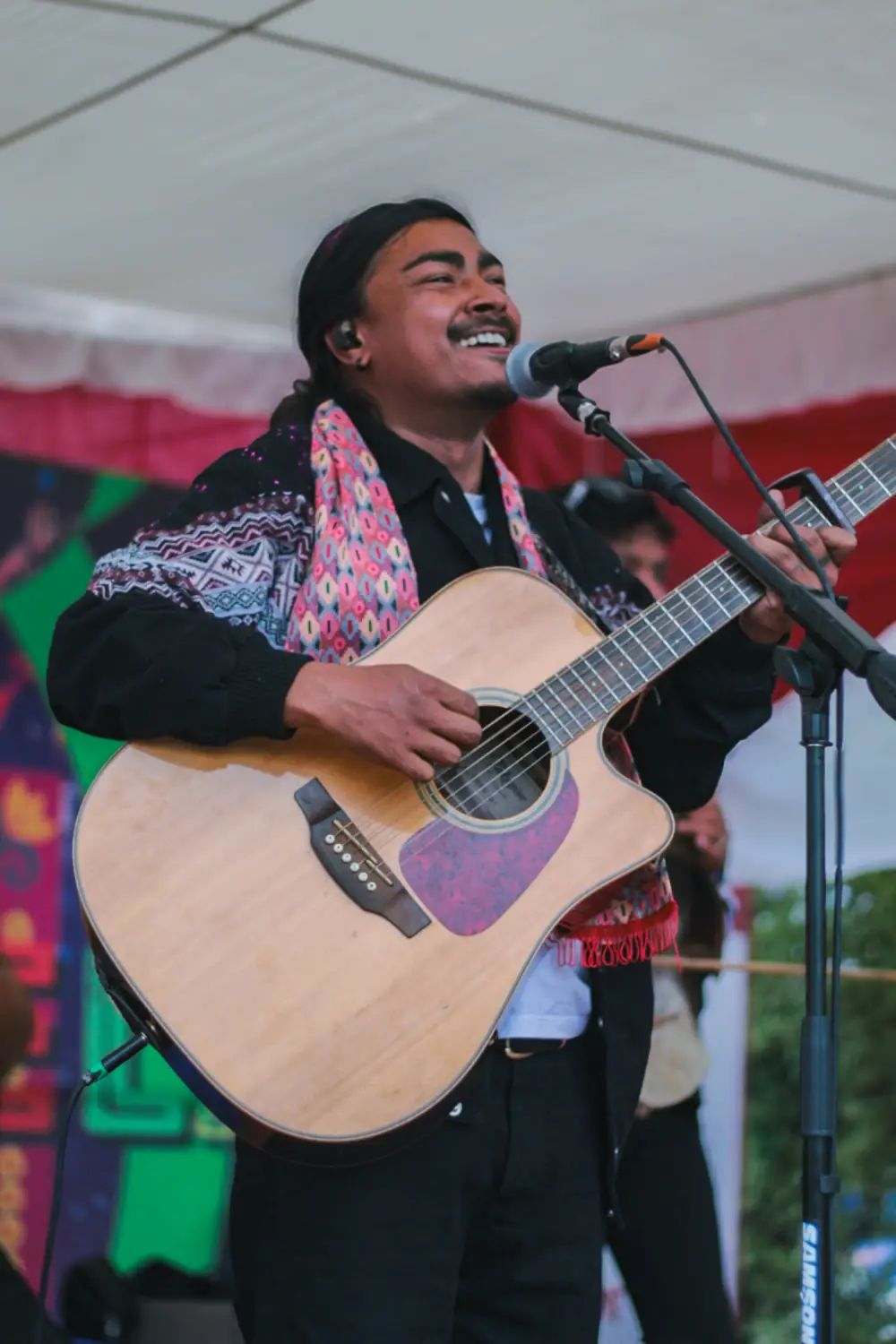Kuma Sagar: An Emerging Voice in Nepali Music
Kuma Sagar, born Siddhi Sagar Prajapati, is a burgeoning talent in the Nepali music scene known for his ability to blend traditional musical elements with contemporary sounds. His journey into the creative industry began to take shape during a transformative moment on his Gosainkunda trek. As he traversed the mountains, a sense of longing for home and his mother’s embrace sparked inspiration, leading to the creation of his heartfelt song “A Mai Re,” which has captivated millions, amassing over 4.5 million views on YouTube. The poignant lines, “Para bata sunda timro tyo boli mutu mai laagera manai ramaayo re,” reflect a deep connection to his roots and emotional experiences, forming the backbone of his music.
Raised in Bhaktapur, Kuma Sagar’s passion for music was nurtured from an early age as he accompanied his grandfather to the dafa, a communal space for learning traditional instruments. This early exposure to Nepali music set the foundation for his journey. Despite his family’s traditional views prioritizing education over artistic pursuits, Kuma remained committed to his passion, often facing challenges. His quest for musical expression sparked tension with neighbors and family, culminating in a transformative experience when he participated in The Voice of Nepal in 2019. While he did not win, this opportunity allowed him to meet inspiring artists and professionals, reinforcing his dedication to a career in music.
In 2020, using only his mobile phone, Kuma recorded his first track, “Bajeko Bajang,” showcasing his resourcefulness and determination. As of now, he has released seven songs that cleverly weave traditional Nepali melodies with modern vibes. His songs, like “Oh Champa” and “Chahare Sari,” reintroduce ancient Malla-period sounds using unique instruments such as the Flute Dha and Bhusyah, while infusing elements of Newa culture.
Kuma’s creative process is characterized by thoroughness and spontaneity. He often jots down lyric ideas that come to him during everyday activities, ensuring he captures the inspiration as it strikes. The meticulousness of his songwriting is evident as he prototypes tracks, seeking feedback from his team to refine his craft. His dedication is palpable; he recalls working tirelessly during lockdown, experimenting with various traditional instruments to create fresh sounds. His song “Oh Champa,” often performed during festive jatras, particularly highlights his ability to merge cultural significance with entertainment, making it a favorite among audiences. Kuma’s international presence was solidified during his first concert in Australia, where an unexpectedly large audience brought him immense pride.
A memorable fan encounter underscores his impact; a young boy’s tears of joy upon meeting him left a lasting impression, reflecting the profound connection he shares with his audience. This connection fuels his motivation to continue producing music that resonates with listeners. Though the Nepali music industry poses its challenges, Kuma Sagar is unwavering in his mission to enhance cultural representation through his music. He aims to inspire the next generation to cherish and preserve their heritage while enriching the musical landscape of Nepal with his innovative compositions.
Kuma Sagar stands as a testament to the power of music as a universal language, weaving stories of love, longing, and cultural pride that resonate far beyond his roots. For anyone looking to explore this new wave of artistry, his works on platforms like YouTube provide a gateway to the rich tapestry of Nepali music, encouraging a deeper appreciation for its cultural legacy.












